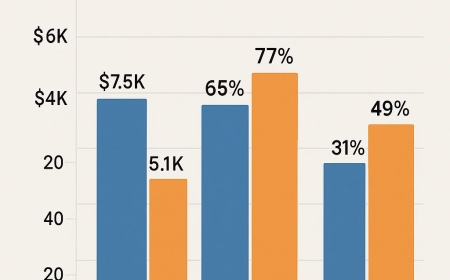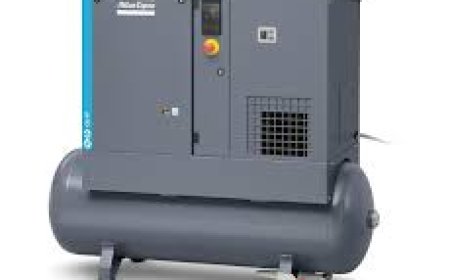Maximizing Export Efficiency: How Smart Pallet Patterns Improve Preform Shipping
Discover how optimizing pallet patterns can significantly enhance export efficiency for PET preforms, and how plastic manufacturing companies are driving logistics innovation.
Getting the Most Out of Exports: Smart Pallet Setups for Shipping Preforms
In the world of packaging, getting ahead isn't just about making stuff well; it's also about how well you move things around. When you're exporting PET preformsthose little things that turn into PET bottleshow you pack and ship them really matters for keeping costs down and reducing waste. One of the most important things, that people often miss, is how you set up your pallets.
Putting stuff on pallets is more than just something you do after making the product. It's a strategy that affects how much you can store, how much you can fit in a container, how safe things are during shipping, and how much money you make. As you ship more and more, figuring out the best pallet setups becomes key, especially for things that are big but don't weigh much, like PET preforms.
If you're a plastic company that ships stuff all over the world, you need to get good at setting up pallets to cut costs, ship things better, and keep your products from getting damaged. This article talks about how pallet setups affect preform exports and what you can do to ship smarter using data.
Why Pallet Setups Matter for Shipping Preforms
PET preforms don't weigh much, but they take up a lot of space in a shipping container. So, shipping them is all about how much space you're using, not how much weight you're carrying. That's why how you lay out your pallets is so important.
A bad pallet setup wastes space in the container and can make the stack unstable, which means things can get damaged and shipping costs go up. But a good setup makes sure the weight is spread out evenly, the stack is stable, and you're using as much space as possible.
This is especially important if you're shipping to far-off places where shipping costs are high and it takes a long time to get containers back. If you're a plastic company that exports preforms, you need to think about pallet setups from the start, not just to save money but to make sure your products arrive in good shape.
How Preform Shape Affects Stacking
The size and shape of preformsthe neck, length, and bottomdetermine how you can stack them on a pallet. Unlike bottles, preforms are fragile and need to be lined up carefully to avoid bending or breaking, especially when things are stacked on top.
To get the best pallet setups, you need to see how well the preform shape works with different stacking methods. Round preforms can be packed tighter, while odd-shaped ones might need spacers.
Engineers use computer software to test different setups before deciding on one. This way, they can make sure each layer fits together well and the pallet stays strong during shipping.
For a plastic company, this planning means you can fit more in a container, have fewer returns, and waste less packaging. This makes customers happier and boosts your profits.
Container Limits and Things to Think About for Exports
Different places have different shipping rules. Standard containers come in 20-foot and 40-foot sizes, and you need to use the right pallet sizes to avoid wasting space. Some places also have weight limits or require wood pallets to be treated, which means you might need to use plastic pallets.
If you're shipping to places with extreme weather, you also need to think about how heat and humidity affect the preforms. This affects not only how you stack them but also what kind of wrap, corner boards, and padding you use.
So, setting up pallets isn't just a one-time thingit changes depending on the container, how long the trip is, the rules of the place you're shipping to, and the weather. A good plastic company works with shipping teams to customize pallet setups for different routes, which lowers risks and ships more efficiently.
Using Automation and Data to Set Up Pallets Better
Setting up pallets isn't just about guessing anymore. With warehouse automation and shipping software, you can test pallet loads on a computer and try out different setups before you start stacking.
These systems look at things like preform size, weight, balance, and pallet stability. They create layouts that use space as efficiently as possible while keeping things safe during shipping.
If you ship a lot, you can connect this technology to your existing computer systems to plan pallet loads based on what you have in stock, how much you're shipping, and the rules of the place you're shipping to. This helps you constantly improve your pallet setups.
A plastic company that uses automation to plan pallets saves money on shipping, makes fewer mistakes, and can handle growing export markets better.
Saving Materials and Helping the Environment
Good pallet setups not only save on shipping costs but also help the environment. Tighter stacks mean fewer trips, less fuel, and less pollution for each preform shipped. This is becoming more important as companies focus on being environmentally responsible.
Besides shipping, optimized pallet setups can cut down on packaging materials like plastic wrap, cardboard, and wood. This means you're using fewer raw materials and creating less waste.
As the world sets higher standards for sustainability, companies are expected to show they're shipping efficiently and reducing pollution. By setting up pallets better, a plastic company can save money, improve its image, and appeal to global buyers and partners.
Customizing for Different Ways of Shipping
Preform exports often involve different ways of shipping, like trucks, trains, ships, and planes. Each one has its own risks and space limitations. For example, ships prioritize fitting as much as possible in a container, while trains need to be stable and secure.
Custom pallet designs that handle these needs can greatly reduce damage during shipping, which is important for preforms that need to be just right for making bottles.
Local rules might also limit pallet height or weight, which means you need pallet systems that can be changed for different types of transport. Companies that have these adaptable pallet systems can respond better to customer needs.
Plastic companies that work closely with shipping companies can design pallets that prevent breakage and speed up customstwo things that make customers happy and increase profits.
Why Reusable Pallets Are Valuable
For long-term shipping contracts, using reusable pallets can cut costs and help the environment. Pallets designed for multiple uses need to be strong, lightweight, and easy to track with barcodes.
These systems let companies reclaim pallets after delivery and return them for reuse. While they might cost more at first, they save money in the long run, reduce waste, and help with inventory management.
For a plastic company that exports a lot, investing in reusable pallet systems can give them an advantage by offering a more sustainable shipping solution.
Turning Shipping into an Advantage
At first, setting up pallets might seem like a small thing. But it's a strategy that affects profits, sustainability, and customer satisfaction in global preform exports.
With shipping costs rising, environmental concerns growing, and global shipping becoming more complex, smart pallet design is a must. Whether it's through computer modeling, data-driven planning, or sustainable materials, companies that prioritize pallet efficiency are setting new standards for shipping.
For any plastic manufacturing company dealing with the demands of global trade, mastering pallet setups is more than just a fixit's a way to lead in the market, keep customers happy, and control costs.








&srotate=0)




























